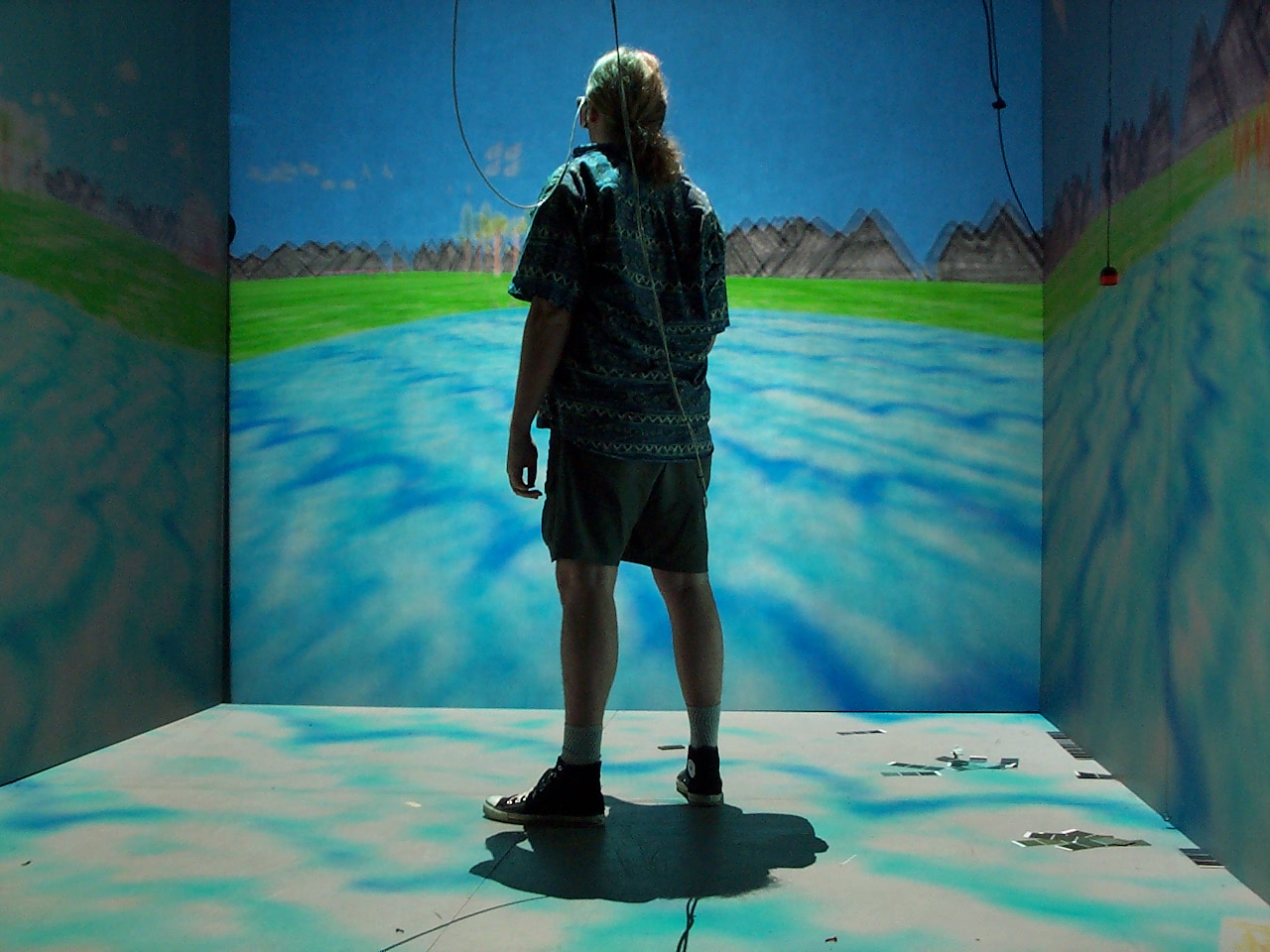Images: Project Tango
When I strapped Google’s Tango gadget on my head, a device designed to virtually replicate reality, I found myself standing on a platform overlooking a chasm that felt thousands of feet deep. I took a virtual step off.
Up until that point it felt real enough to generate some feelings of nausea while peering into the abyss, but with the background chatter from crowds of people milling around Google’s I/O conference, the experience of virtually diving off a cliff didn’t feel quite the way I’d expect it would in reality.
Still, after messing around with one of the Tango developer units, I couldn’t help think their tagline “we like epic shit” sounded accurate. Project Tango is the brainchild of Google’s Advanced Technology and Projects division. The device itself looks like a generic, small-sized tablet. And Google had an optional Oculus Rift-like apparatus to strap it to your head so you can experience the digital-analog crossover hands-free.
One of cameras on the tablet is a tiny fisheye lens—ultra wide angle glass with 180-degree vision. Another is actually an infrared sensor, which Tango uses to motion track the physical world in full 3D. The result is a kind of mixed reality existence; the device incorporates the features of the physical world into the virtual environment, digitizing your surroundings.

Image: Screenshot from Project Tango promo video
While visiting the virtual cliff, I took a minute to look around and explore the scene. A meter in the ‘real world’ translated to an identical meter in the virtual world. I tried another scene in which I was immersed in a virtual fishbowl—a suitable metaphor for a Silicon Valley tech conference, methinks.
Attaching the Tango apparatus and sliding it over my eyes was a taste of the future. It’s a bit heavy, and I wouldn’t want to play Gears of War for long. It was also, at first, hard to suspend disbelief—the cliff world looked totally fake. But, the fishbowl’s blend of reality—the water, fish, and surface were “skinned” on top of the camera’s live feed—was unlike anything I’ve experienced before. It made me want to swim to the surface for air.
Taking the unwieldy head-strap contraption off, I got a chance to play around with a few of the regularly displayed apps on the device’s 1920×1200 pixel flat screen. It was an interesting experience to navigate virtual worlds on a tablet by actually moving closer and farther away from what I wanted, using Tango as a kind of flashlight into the virtual world.
The first thing I tried was a zombie apocalypse type of game, where a helicopter gunship floated above a virtual landscape, and basically I moved around the show floor, on occasion bumping into other I/O attendees, while wasting zombies with some explosive artillery.

Dubug mode: The view from Tango’s camera, and tracking location data. Image: Author
The game’s graphics were good, for a demo, and the Tango itself is powered by Nvidia’s Tegra K1 chip, which in a rendering demo displayed a damn realistic version of a bald guy’s head. Imagine if someone built a multiplayer first-person shooter for this gizmo, and held a tournament in a huge auditorium. Pandemonium or fucking awesome; I’m not sure which yet.
Gaming aside, Tango has some practical uses. A couple developers I was chatting with at the Google Advanced Mobile Applications booth told me that their company planned to turn it into a medical device—in order to place virtual “tags” and other identifiers on people on the operating table.
While Project Tango is still just that, a project, we’re going to start to see some of these applications soon. The developer kits go on sale sometime “later on this year” for $1,024, one of the reps told me. So anyone else looking to make a virtual cliff jump, that experience won’t be too far away—if you can pony up the cash.





